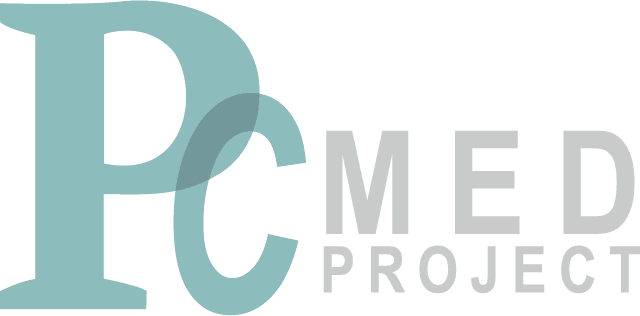
ACC/AHA Blood Pressure Guideline: Current Classification System and Treatment Targets
SUMMARY:
The USPSTF released its latest recommendation regarding screening for hypertension in adults (2021). Based on current evidence demonstrating high certainty regarding net benefit, the task force reaffirms and “recommends screening for hypertension in adults 18 years or older with office blood pressure measurement. The USPSTF recommends obtaining blood pressure measurements outside of the clinical setting for diagnostic confirmation before starting treatment. (grade A recommendation)”.
The ACC/AHA task force report represents the work of several professional bodies based upon hundreds of studies. There are notable changes from previous practice guidelines, especially related to screening and detection. The ACC/AHA task force recommends the following classification system:
<120 mmHg and <80 mmHg: NORMAL BP
- Healthy lifestyle choices
- Yearly check-ups
120 to 129 mmHg and <80 mmHg: ELEVATED BP
- Healthy lifestyle changes
- Reassess in 3 to 6 months
130 to 139 mmHg or 80 to 89 mmHg: HIGH BP to STAGE 1
- 10-year heart disease and stroke risk assessment <10% risk
- Lifestyle changes
- Re-assess in 3 to 6 months
- 10-year heart disease and stroke risk assessment ≥10% risk
- Lifestyle changes
- Medication
- Monthly follow-up until BP is under control
≥140 mmHg or ≥90 mmHg: HIGH BP – STAGE 2
- Lifestyle changes
- Consider initiation of therapy with 2 different classes of medications
- Monthly follow-up until BP is under control
- If BP ≥160/100 mm Hg: Treat promptly, monitor carefully and adjust medication dose upward as necessary to achieve control
NOTE: Calculate 10-year risk of heart disease or stroke using the ASCVD algorithm published in 2013 ACC/AHA Guideline on the Assessment of Cardiovascular Risk (see ‘Learn More – Primary Sources’ below)
Additional Hypertension Classifications
‘White Coat’ hypertension
- Elevated BP in the office but not outside the office
- Checking for ‘White Coat’ hypertension using either daytime Ambulatory Blood Pressure Monitoring (ABPM) or Home Blood Pressure Monitoring (HBPM) is “reasonable” if
-
- Office SBP is >130 but <160 mm Hg or
-
- Office diastolic BP (DBP) >80 but <100 mm Hg and
- Patient has failed to improve with 3 months of lifestyle modification
‘Masked’ hypertension
- Elevated BP out-of-office but not in-office
- Checking for ‘masked’ hypertension with daytime ABPM or HBPM is “reasonable if”
-
- Office SPB is 120 to 129 and DBP is <80 while not on antihypertensive medications or
- If patient is on antihypertensive therapy with office SPB of 120 to 129 and DBP is <80, and they have high risk comorbidities such as CKD, >10% risk of stroke, or signs of hypertension related end organ damage
Acute severe hypertension
- Severe hypertension: SBP ≥180 mmHg or DBP ≥120 mmHg with end organ damage (e.g., pulmonary edema, cardiac ischemia, neurologic deficits, acute renal failure, aortic dissection, and eclampsia) is termed hypertensive emergency. This is a medical emergency that requires hospital care.
- If no evidence of end organ damage this is termed hypertensive urgency can manage in ambulatory setting with close follow up
- Blood pressure should not be decreased abruptly to prevent cerebral hypoperfusion
Resistant hypertension
- Uncontrolled BP despite treatment with ≥3 antihypertensive agents of different classes (one of which is usually a diuretic)
The ACC/AHA task force also recommends the following as cut offs for hypertension when using at home BP measurements: >110/>65 mmHg for nighttime mean and >125/>75 mmHg for 24hr mean.
NOTE: Calculate 10-year risk of heart disease or stroke using the ASCVD algorithm published in 2013 ACC/AHA Guideline on the Assessment of Cardiovascular Risk (see ‘Learn More – Primary Sources’ below)
KEY POINTS:
Risk Factors
- Genetic predisposition
- Complex polygenic disorder
- Rarely single gene disorder (e.g. Liddle’s or Gordon’s syndrome)
- Environmental Risk Factors
- Overweight and Obesity
- Sodium Intake
- Potassium
- Higher levels appear to blunt sodium effect on BP
- Lower sodium/potassium ratio may reduce risk of CVD
- Physical fitness
- Even modest levels of physical activity is associated with a decrease in the risk of incident hypertension
- Alcohol
- In US, may account for 10% of BP burden
- Also associated with higher HDL and at modest intake range, lower risk for CHD when compared to abstinence
Non-pharmacological Interventions
- Weight loss
- Goal: Optimum goal is ideal body weight but can expect 1mm Hg for every 1kg reduction
- Diet
- DASH diet: Fruits and vegetables, whole grains, low-fat dairy products, reduced saturated and total fat
- Other diets with supportive evidence
- Low in calories from carbohydrates
- High-protein diets
- Vegetarian diets
- Mediterranean dietary pattern
- Sodium: Goal <1500 mg/d, but aim for at least a 1000mg/d reduction
- Potassium: Goal 3500 to 5000 mg/d, preferably through diet
- Exercise – Recommend structured exercise program
- Aerobic: 90 to 150 min/wk; 65% to 75% heart rate reserve
- Dynamic resistance and Isometric resistance also shown to lower BP
- Alcohol Reduction (drink = 12 oz regular beer [5% alc] / 5 oz wine [12% alc] / 1.5 oz distilled spirits [40% alc])
- Women: ≤ 1 drink per day
- Men: ≤ 2 drink per day
Taking a BP
- Prep
- Avoid caffeine, exercise, smoking at least 30 minutes before
- Empty bladder
- No talking while measurement is taken
- Remove clothing covering cuff placement
- Patient should sit on chair, feet on floor and back supported for > 5 min before taking pressure (not lying or sitting on an exam table)
- Technique
- Validated device
- Support arm
- Middle of cuff on upper arm at level of atrium (midpoint of the sternum)
- Cuff size: Bladder should encircle 80% of the arm
- Can use either stethoscope diaphragm or bell
- Taking the measurement
- First visit: Record BP in both arms and use arm with higher reading for subsequent measurements
- Separate measurement by 1 to 2 minutes
- To estimate systolic BP, use radial pulse obliteration and then inflate cuff 20 to 30 mmHg higher
- Deflate cuff pressure 2 mmHg per second and listen for Korotkoff sounds
- Systolic BP: First Korotkoff sound
- Diastolic BP: Disappearance of all Korotkoff sounds
- Use nearest even number
- Note time of most recent BP medication before taking measurements
- Average the readings to estimate BP
- Use average of ≥ 2 readings obtained on ≥ 2 occasions
Note: The AHA has released a scientific statement that validated oscillometric devices allow accurate BP measurement in the outpatient setting, while reducing human errors associated with the auscultation.
Target BP Goal
- Known CVD or 10-year heart disease and stroke risk assessment ≥ 10% risk
- 130/80
- Without additional markers of increased CVD risk, a BP target of less than 130/80 mm Hg may be reasonable
Adults ≥ 65 years
- Treat to same goal of <130/80 as younger adults
- Recommendation differs with ACP goal of <150/90 and AAFP goal of <140/90
Pregnancy Recommendations
- Women with hypertension who become pregnant, or are planning a pregnancy should be transitioned to methyldopa, nifedipine, and/or labetalol during pregnancy
- Do not treat women with hypertension in pregnancy with ACE inhibitors, ARBs, or direct renin inhibitors
Oral Contraceptives and NSAIDs
- Oral contraceptives and NSAIDs are listed as commonly used medications that may cause elevated BP
- The ACC/AHA guideline recommends the following
OCPs
Use low-dose (e.g., 20 to 30 mcg ethinyl estradiol) agents or a progestin-only form of contraception, or consider alternative forms of birth control where appropriate (e.g., barrier, abstinence, IUD)
Avoid use in women with uncontrolled hypertension
NSAIDs
Avoid systemic NSAIDs when possible
Consider alternative analgesics (e.g., acetaminophen, tramadol, topical NSAIDs), depending on indication and risk
Learn More – Primary Sources:
10-year risk calculator using ASCVD algorithm
AHA AMA: BP Treatment Algorithm
Measurement of Blood Pressure in Humans: A Scientific Statement From the American Heart Association
